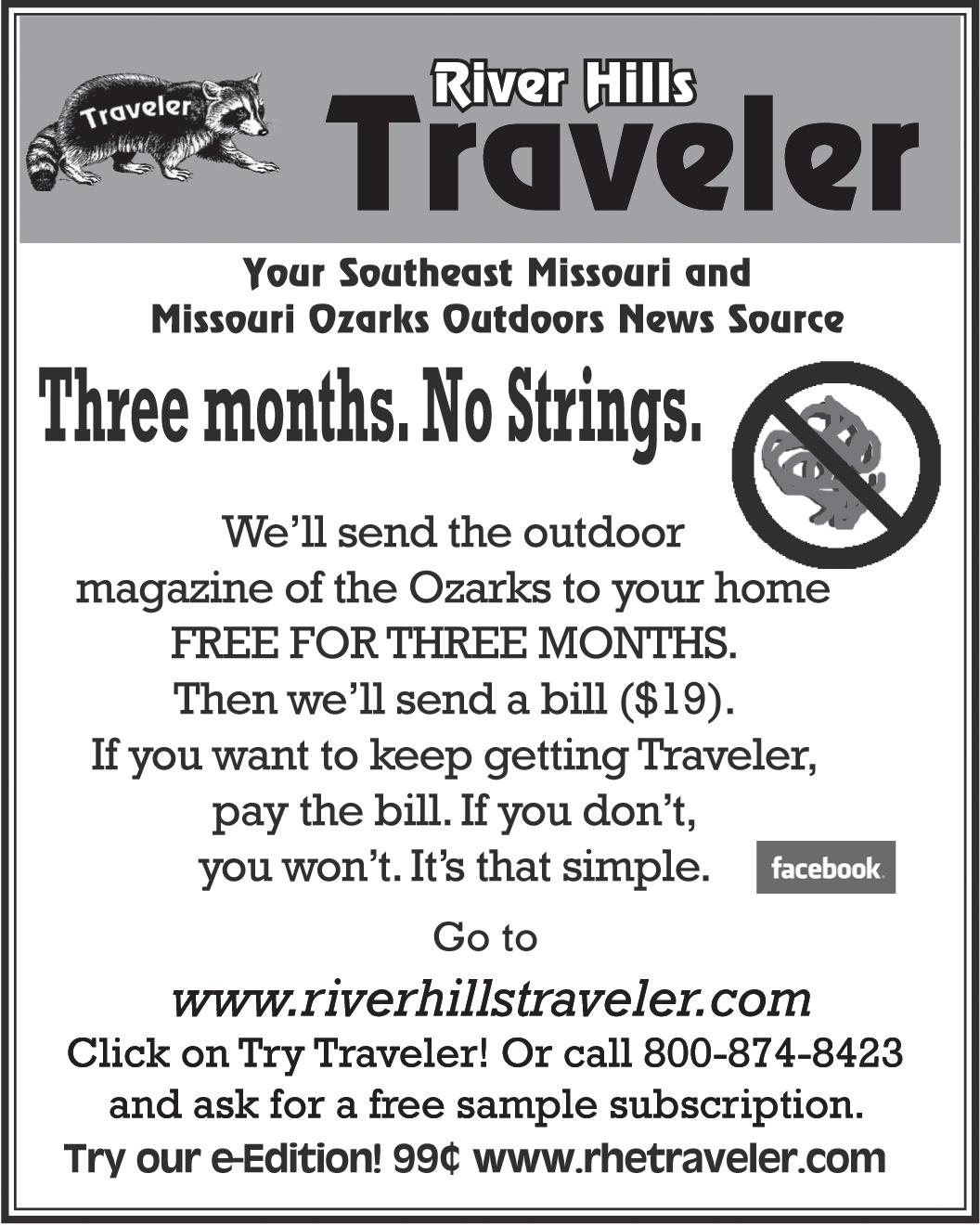
7 minute read
What's New with the Katy Trail?
What’s New with Katy Trail State Park – The 30th Anniversary, Flood Recovery and the New Trail Advisory Map
This year marks a milestone year for Katy Trail State Park, the big 3-0! From its inception and throughout its 30-year history, Katy Trail State Park has provided recreation, and opportunities to explore natural and cultural resources for up to 400,000 annual visitors.
The Katy Trail is the longest developed rail-trail in the United States and is in the national Railto-Trails Conservancy’s Hall of Fame. Along its route, the trail hugs steep bluffs, wanders close to the Missouri River, cuts through thick forest and crosses gently rolling prairies and fields. The recreational corridor allows hikers and bicyclists to pass through many communities and explore a slice of rural Missouri history.
Due to last year’s wet spring and summer, many areas of the trail were closed along the Missouri River from flooding and for trail recovery, requiring special attention from Missouri State Parks’ construction crews and maintenance staff.

Katy Trail State Park. (Photo: Courtesy of Missouri State Parks)
Numerous projects along the trail have already been completed through the winter months in preparation for the Katy’s on-season; however, continuous efforts are being made to improve surfacing, bridges and washed out areas. In addition to the team’s hard work, volunteers from local areas along the trail have provided tremendous assistance cleaning up trash and debris from the flooding.
As you plan for your Katy Trail rides this year, be sure to check the current status of the trail using the online Katy Trail State Park Advisory Map at mostateparks.com. The map will help you know what to expect before you hit the trail, highlighting any advisories or closures due to flooding and repairs.
Although the trail is open, rough areas can occur at any time due to weather variations. Travel with caution and view the map in advance so you can safely enjoy the views and wildlife, history and cultural and natural resources that the Katy Trail has to offer!


Fun in the Sun With Sticks and Strings
Summertime is undoubtedly upon us. Most folks look forward to this time of year more than any other season. Missouri is home to one giant outdoor toybox for people of this persuasion with a plethora of lakes, cool crystal-clear rivers, and an abundance of public land to hike and camp on. For me, it’s just a waste of three good months until bow season opens up again in September. I grudgingly pass the time feeding hungry ticks and cussing various yard maintenance tools. The only respite I enjoy during this hot, humid prison sentence is when I spend slinging arrows at fish and squirrels. If you have never had the pleasure of going bowfishing, you owe it to yourself to try. The equipment you’ll need is minimal: a bow, a fish arrow, some bowfishing line, and something that attaches to your bow that you can wrap that line around. While the pros have a bunch of money tied up in boats and motors, you can get by with a pair of waders or just shooting from the bank. And the best thing about bowfishing is that you generally have a lot of targets to shoot at. There have been several times when I quit a good day on the water because my fingers were too sore from pulling the bowstring.
Missouri allows its citizens to take any non-game species of fish by this method any time of the day, any day of the year. The bag limits are liberal, and for some invasive species, like Asian Carp, you can shoot as many as you want. Some people balk at eating these types of fish, but I think gar nuggets are pretty tasty, and big fillet of redhorse sucker fried right up on the riverbank is hard to beat. Another delicacy that my good friend, Brian Peterson, turned me onto are his fantastic carp balls. These are made from carp that he has pressure canned like the canned mackerel and salmon you buy. Eat a dozen of these, and wash them down with a cold adult beverage, and soon all your summertime troubles will be nothing but a distance bitter memory.
Bowfishing is a great way to get your shooting tuned up for fall because of the sheer amount of shooting that you will be doing in all sorts of light conditions, water conditions, at many different angles and different target sizes. But if you want to hone your shooting skills, grab a bunch of arrows that you don’t care about losing and start sending them at our state’s abundant squirrel population. If you can consistently hit a squirrel in the head with an arrow, you are more than ready to take on whitetails when the fall season rolls around.
Missouri has one of the longest squirrel seasons in the country with a large daily bag limit of 10 squirrels and a possession limit of 20. I look forward to Memorial Day weekend each year because that Saturday is when the season opens, and you can bet your bacon grease that I am out there trying to thin the herd. My usual weapon of choice is my trusty 12-gauge flintlock, Ole Betsy, but I also kill a fair amount of squirrels around the house with a longbow or recurve. Like bowfishing, I get a lot of shooting practice in, but I am a bit more particular about my shot selection because the only way to retrieve my arrows is to find them. The heads on my squirrel arrows are either steel blunts of some kind or a bodkin point. Bushytails are the toughest critters I have ever hunted and I have knocked many of them clean off a tree limb only for them to get up and run off.
A bodkin point is just a small broadhead (I make my own), and I prefer its penetration powers because I think that lessens the chance that your squirrel will get away. Another point that I have used on squirrels with success is a judo point. These points have little spring-loaded arms around the head that will catch in the grass, so your arrow doesn’t travel as far. They will also catch on tree bark and stay there, so think twice before you shoot at a squirrel in a tree with this type of point.
For tree squirrels, I usually use a flu-flu arrow with a blunt head. The large feathers on a flu-flu keep it from traveling too far if you miss. For a squirrel on the ground, I use an arrow with normal fletching tipped with either a bodkin or judo point.
So there you have it, my plans for Summer 2020. I’ll probably throw in some meat smoking and beekeeping for good measure and try to keep yard mowing to a bare minimum. September will be here before you know it, so make sure to keep your archery skills sharp. Shooting 30-pound buffalo carp and 10-ounce gray squirrels are both fun, both provide excellent table fare, and both will get you ready for the season to come.
Darren Haverstick
(Left) This big buffalo made a lot of carp balls. (Photo: Darren Haverstick) (Right) First squirrel of the 2020 season. (Photo: Darren Haverstick)
Peterson’s Carp Balls
1 pint canned carp, drained 1/2 sleeve saltine crackers, crushed (about 8-10 crackers) 1 large egg 1/4 cup finely chopped onion 1/4 cup shredded parmesan cheese 1/2 tsp dried parsley 1/2 tsp cayenne pepper 1 tsp garlic powder Salt/pepper to taste
Mix all ingredients thoroughly, form into patties or balls. Fry in 375° oil until golden brown. Drain on paper towels.
Serve with a wedge of lemon and/or tartar sauce.
Feel free to add/remove/adjust ingredients to preference. It's just a starting point.























